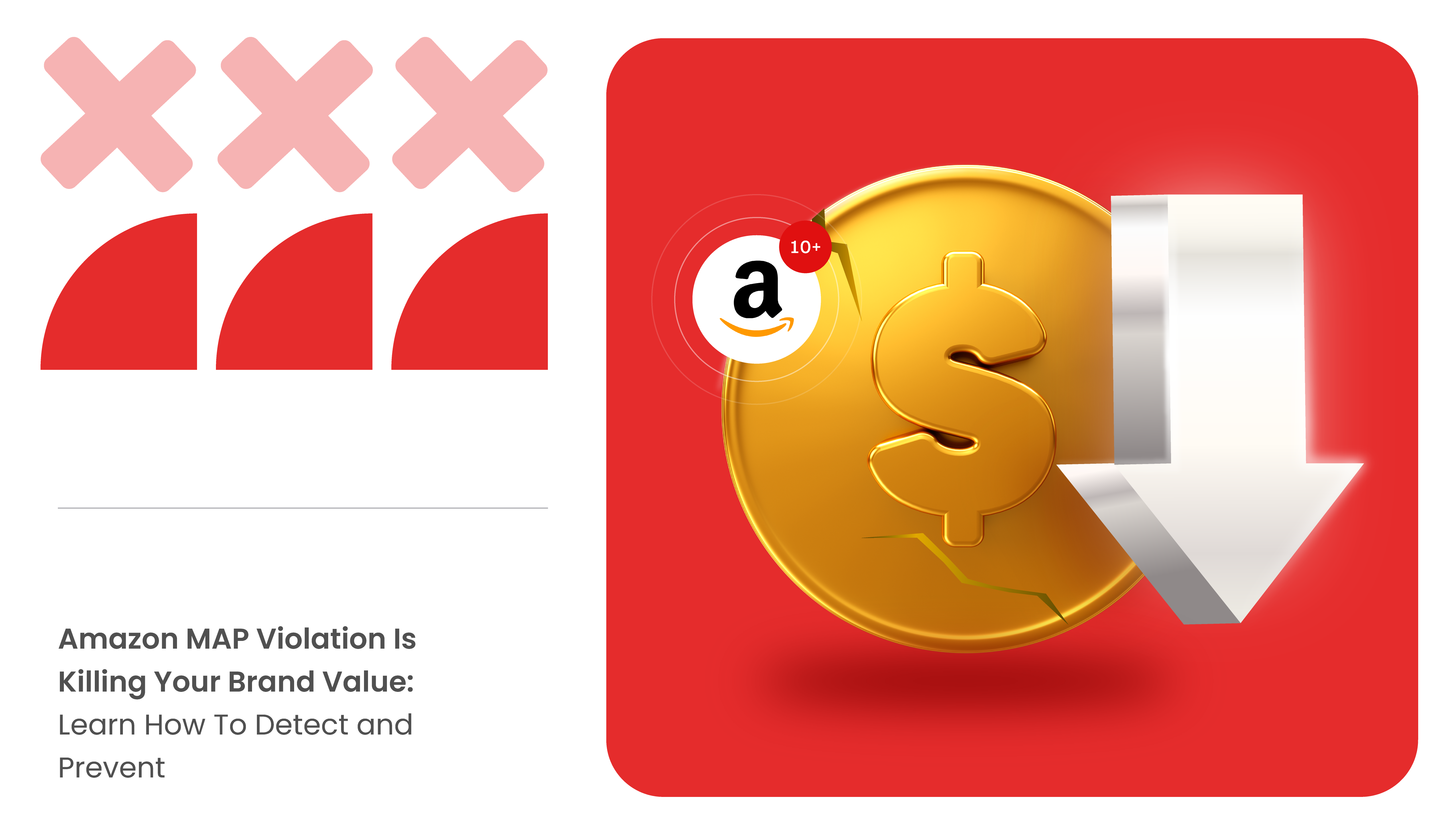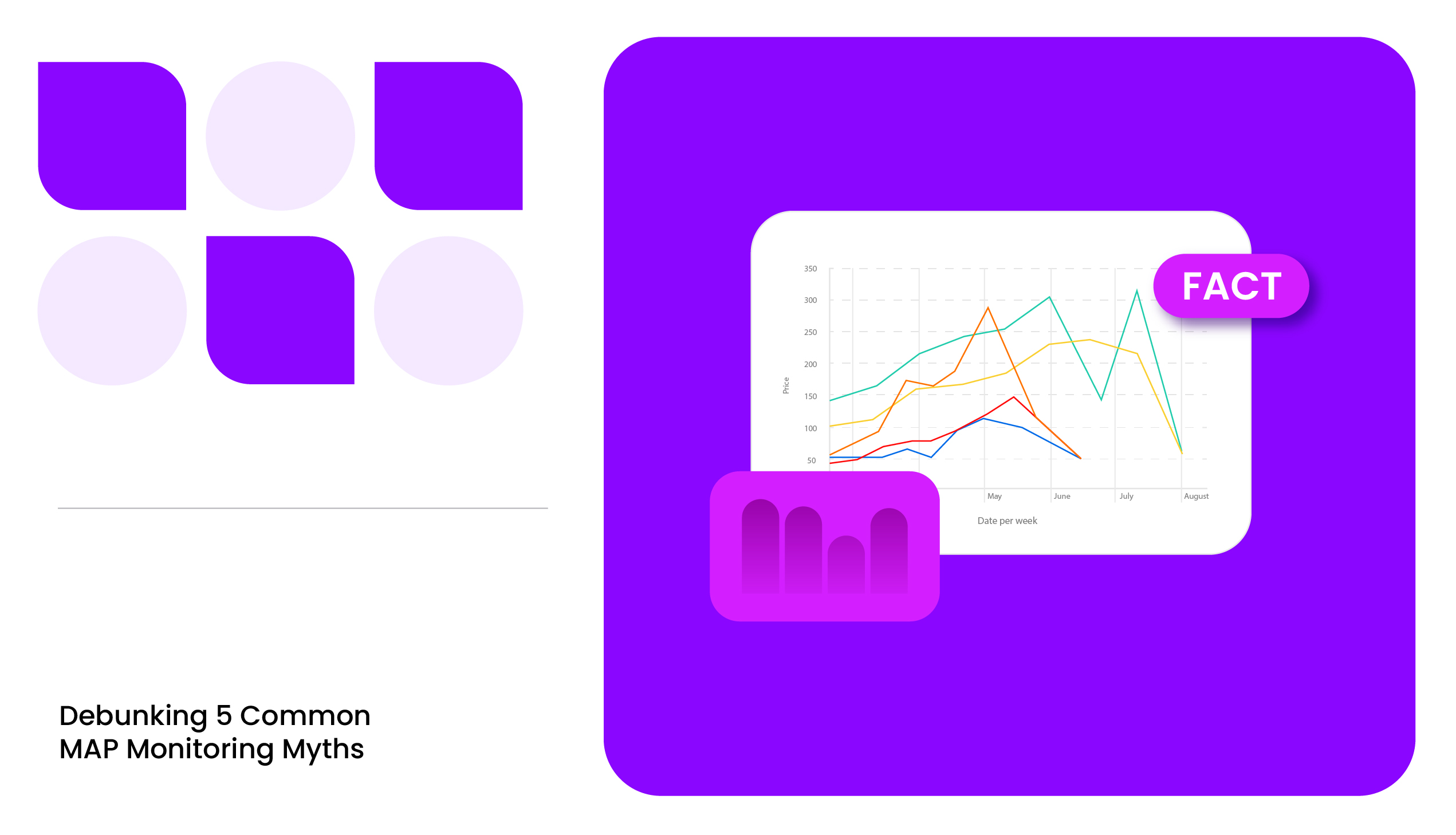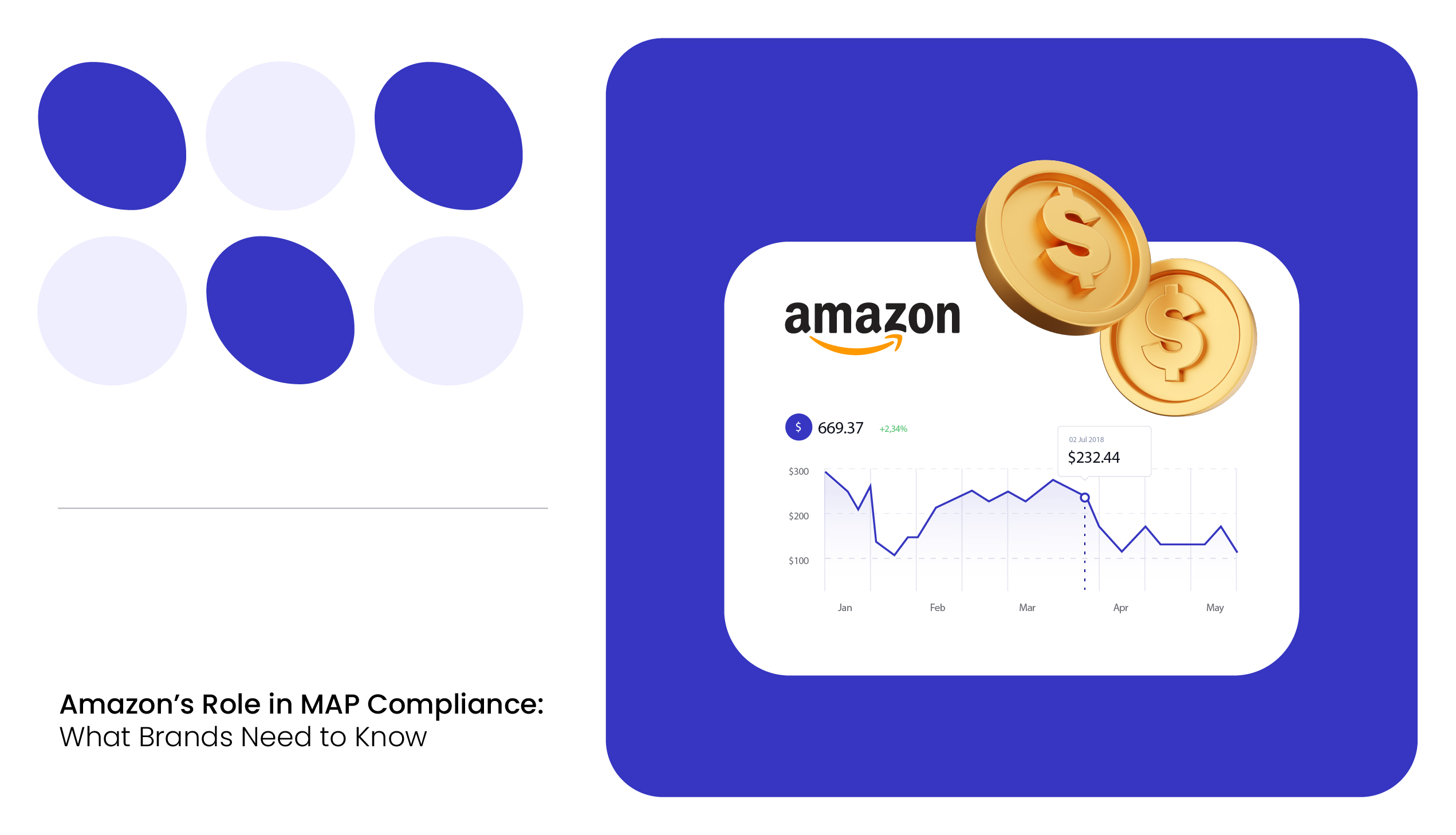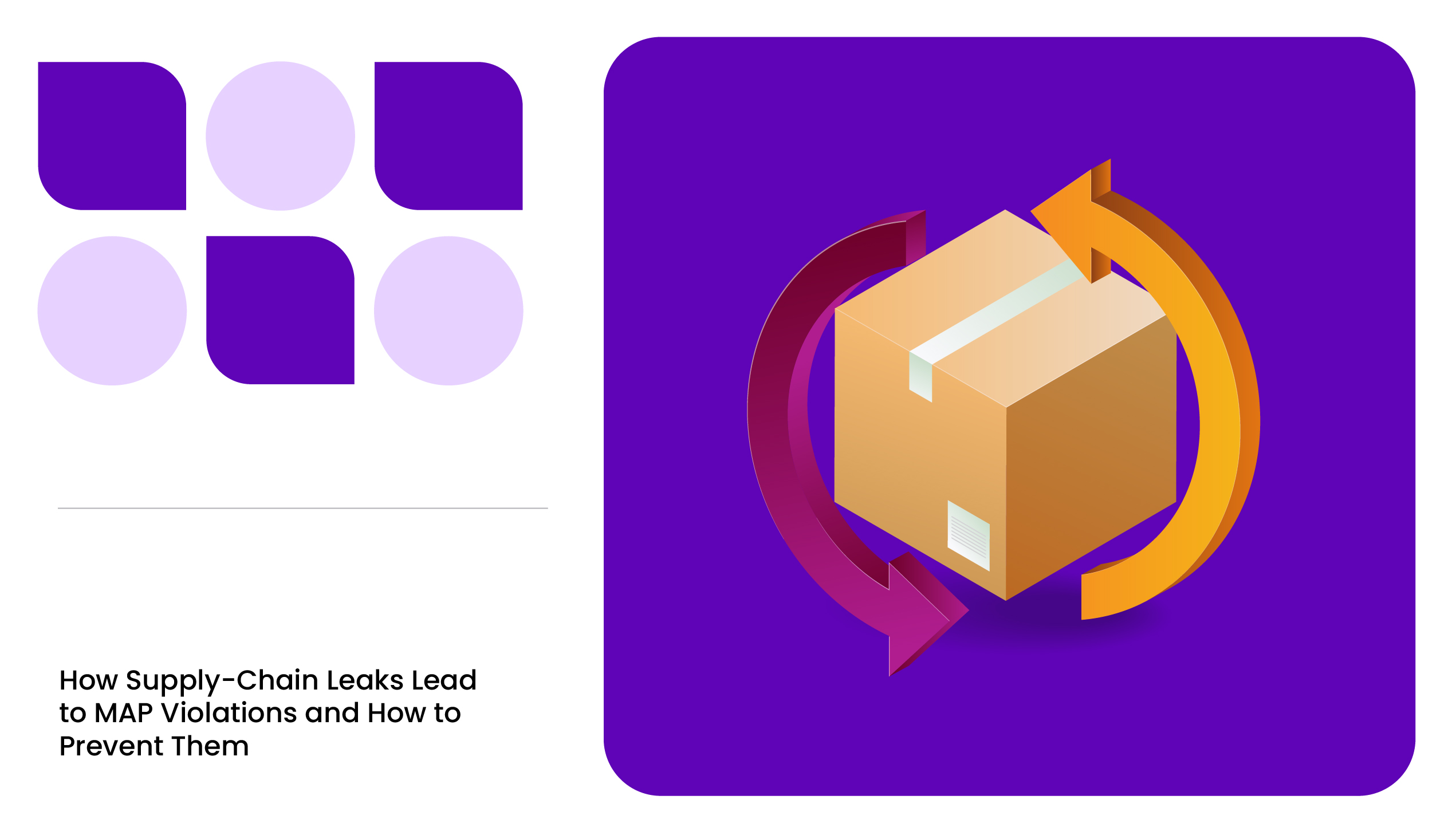Imagine spending years building a premium brand, only to see rogue sellers slashing your prices on Amazon like it’s a bargain basement sale. It’s frustrating, right?
That’s what happens when an Amazon MAP violation goes unchecked. If you’re not proactively enforcing MAP, you’re handing control of your pricing over to sellers who don’t care about your brand’s reputation.
Let’s talk about how to detect and prevent Amazon MAP violations before they destroy your brand integrity.
Common Causes of Amazon MAP Violations
Maintaining MAP pricing on Amazon is like herding cats—difficult but not impossible. Sellers are constantly looking for ways to edge out the competition, and sometimes that means breaking your pricing rules.
Understanding why an Amazon MAP violation happens is the first step to stopping them in their tracks:
Unauthorized Sellers Listing Products Below MAP
The wild west of Amazon selling means unauthorized sellers will pop up like weeds, acquiring your products through gray markets, liquidation channels, or even unauthorized distributors.
These sellers don’t care about your brand value or long-term relationships—they just want to move inventory fast. They’ll price your product below MAP, undercut your authorized sellers, and trigger a price erosion.
Aggressive Pricing Strategies by Third-Party Sellers
Third-party sellers, desperate to win the buy box, often slash prices below MAP. They see it as a short-term gain, but for brands, it’s a long-term nightmare.
A few sellers breaking MAP can quickly spiral into a pricing war, reducing perceived brand value and causing distrust among authorized resellers.
Lack of Awareness or Disregard for MAP Policies
Some sellers genuinely don’t know your MAP policies, especially if they’re buying through multiple layers of distribution. Others know but simply don’t care because they don’t think they’ll get caught.
Without active Amazon price monitoring or prompt MAP enforcement, expect sellers to test the waters and push the limits.
READ MORE| Is your price monitoring strategy not working out as planned? Read our blog 5 Common Price Monitoring Mistakes, to find out why!
Can Amazon Enforce MAP?
Many brands assume Amazon will step in and regulate pricing violations, but that’s not the case. As per Amazon’s website, Amazon doesn’t enforce MAP; it views it as a manufacturer-retailer agreement.
That means YOU are responsible for monitoring and taking action against MAP violators. If you’re not watching your pricing like a hawk, expect violations to pile up quickly.
MAP Violation Detection on Amazon
You can’t fix what you don’t track. The key to keeping MAP violations in check is having an airtight MAP violation detection strategy.
Relying on manual checks or waiting for authorized sellers to complain isn’t enough. You need a game plan that actively spots violations before they spiral out of control.
Here are 3 ways to improve your strategy to detect MAP violations:
Regular Monitoring of Listings
If you’re not consistently monitoring your listings, you’re playing defense while sellers run circles around you. Check your product listings daily or, at the very least, weekly.
If you wait too long, pricing violations will pile up, conditioning customers to expect lower prices and making it harder to enforce MAP later.

In episode 3 of MetricsCart’s Digital Shelf Insider Podcast, e-commerce expert François Maingret sheds light on trends, strategies, and innovations shaping digital commerce. You can listen to the full episode here:
Leveraging Amazon’s Brand Registry
Amazon’s Brand Registry gives you some control, but it’s not a magic lamp. Enrolling in Brand Registry lets you take advantage of tools like automated brand protection and counterfeit detection.
While it won’t enforce MAP, it helps identify unauthorized sellers and gives you a stronger position when submitting complaints.
Utilizing Price Monitoring Tools
Manual monitoring won’t cut it at scale. Invest in an automated price monitoring software that tracks your products across Amazon and alerts you the moment a violation occurs.
Tools like MetricsCart’s MAP monitoring software offer real-time tracking and reports, so you can protect your brand online and act faster when there is an Amazon MAP violation.
READ MORE| Can’t seem to find the right MAP monitoring system? Check out Best MAP Monitoring Software You Should Consider for E-Commerce.

Addressing Amazon MAP Policy Violations
MAP violations won’t fix themselves. If you catch a seller violating MAP, you need to act fast. Leaving it unchecked sends a message that your policy is just a suggestion.
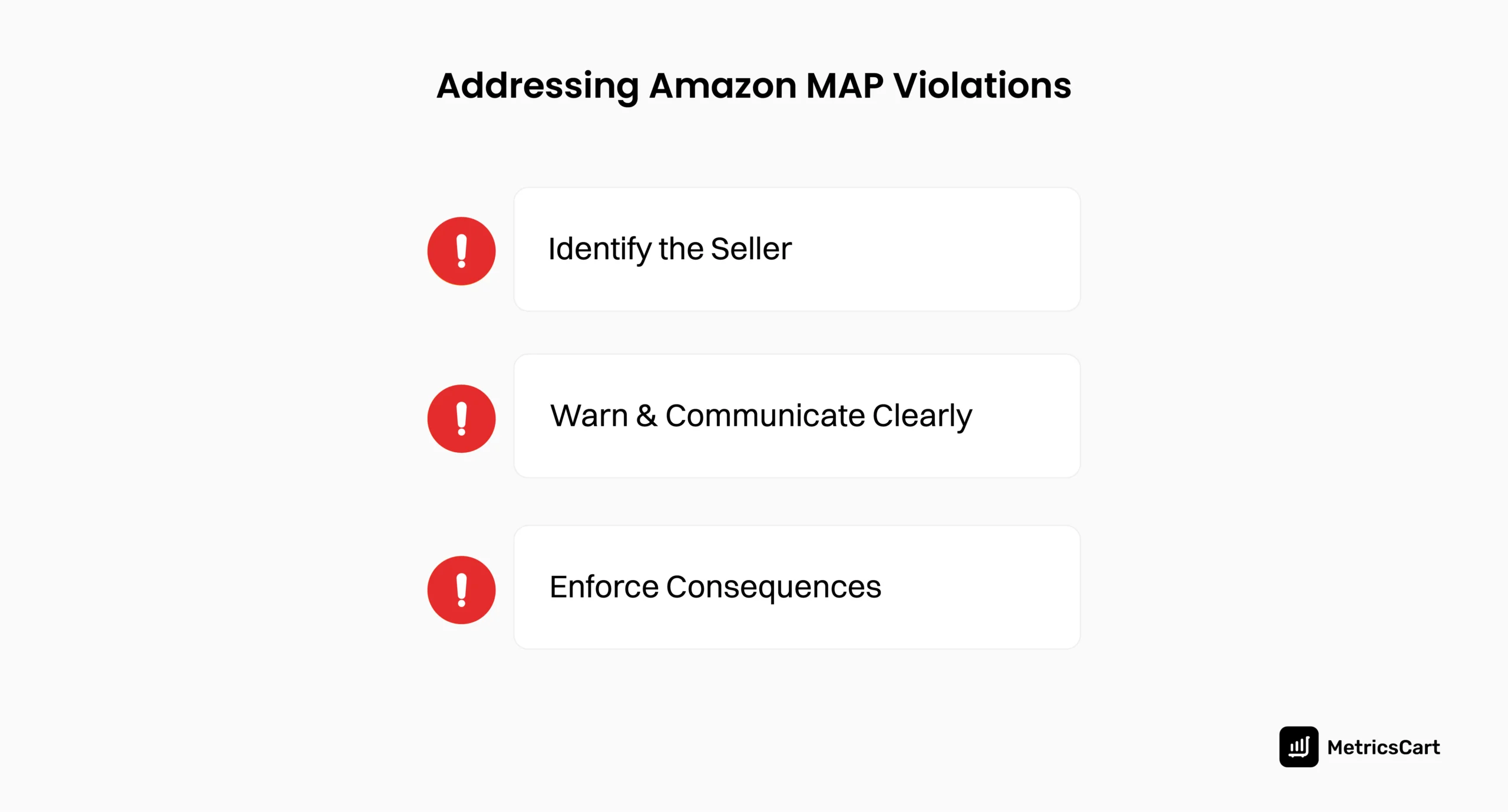
Here’s what to do when an Amazon MAP violation pops up:
- Identify the Seller: The first step is knowing who you’re dealing with. Is it an unauthorized seller? A rogue distributor? A well-known retailer who made a pricing mistake? Track them down, gather their store details, and determine how they got your product.
- Communicate Clearly: Reach out and give the seller a chance to fix the issue. Many will adjust their pricing if you provide a professional but firm warning. Include proof of the violation, reference your MAP policy, and let them know you’re monitoring their listings.
- Enforce Consequences: If warnings don’t work, escalate. This could mean cutting off supply, reporting them to Amazon for policy violations (if applicable), or even taking legal action. Consistent MAP enforcement is the only way to ensure sellers take your MAP policy seriously.
READ MORE| Confused about how MAP enforcement works? Check out A Beginner’s Guide to MAP Enforcement in E-Commerce to know more.
MAP Violation Prevention on Amazon
Setting up a strong MAP enforcement system from the beginning is crucial to brand protection. Here are 4 ways to step up MAP violation prevention:
Establishing Clear and Enforceable MAP Policies
Your MAP policy needs to be airtight. Spell out the rules, the consequences, and the Amazon MAP monitoring mechanisms. Communicate it clearly to all authorized sellers and distributors. If there’s any room for ambiguity, expect sellers to exploit it.
Building Strong Relationships with Authorized Sellers
Your best defense against Amazon MAP violations is a solid network of authorized sellers who respect your pricing. Support them, keep them informed, and encourage them to report violations. Moreover, if your distributors also act as Amazon sellers, their margin incentives often lead to MAP violations. Restrict discounts or bonuses for those who resell on the platform without explicit authorization.
The better your relationships, the less incentive they’ll have to break MAP.
Make Hero SKUs Unmatchable
Modify pack sizes, bundle products, or create Amazon-exclusive SKUs for your top-performing items. Differentiation makes it harder for rogue sellers to price-match your bestsellers.
Remove Low-ASP Items or Repackage into Multipacks
Low-priced items are frequently targeted for undercutting. Removing them or repackaging into higher-value multipacks can raise the price floor and reduce margin pressure.
Create Channel-Exclusive Product Lines
Offer unique product variations to specific channels (like Amazon, DTC, or retail partners). Channel exclusivity reduces direct SKU overlap and protects pricing per channel. This reduces the risk of cross-channel price leaks.
Invest in High-Margin, High-ASP ASINs
Direct your performance marketing and promotions toward products that give you a greater buffer against discounting. These ASINs can better withstand minor price fluctuations without triggering MAP breaches.
Implementing Proactive Price Monitoring Systems
Set up automated alerts and use tracking software to catch violations before they spread. Make sure your team is equipped to act quickly—delayed enforcement weakens your MAP policy.
Taking Action Against Violators
Sellers will test your limits. If you let one MAP violation slide, others will follow. Set a precedent—be relentless about enforcing your MAP, and sellers will think twice before trying to undercut you.
Closing Notes
Controlling Amazon MAP violations requires constant vigilance. Unauthorized sellers, aggressive pricing, and distribution loopholes can quickly spiral out of control if left unchecked.
By leveraging Amazon price monitoring tools, establishing clear MAP policies, and actively enforcing them, you can maintain pricing integrity and brand value. A proactive approach is the only way to stop price erosion before it damages your brand’s long-term growth.
At MetricsCart, get data-driven insights to protect your brand’s pricing strategy online. Whether you need help detecting MAP violations or want a tailored approach to marketplace pricing, contact MetricsCart today!
MAP Violations Erode Brand Trust. Monitor and Act Before It’s Too Late!
FAQs
A MAP violation happens when a seller advertises a product below the manufacturer’s Minimum Advertised Price, undermining pricing integrity and potentially damaging brand value.
No, Amazon does not enforce MAP. It’s up to brands to monitor and take action against violators.
It depends on how quickly you address them. Some violations last days, while others persist for weeks if left unchecked. The sooner you take action, the better.
Use automated price tracking tools and Amazon Brand Registry to stay on top of violations.
Yes! Tools MetricsCart’s price monitoring offers automated tracking and reporting to help brands detect and enforce MAP violations effectively.

